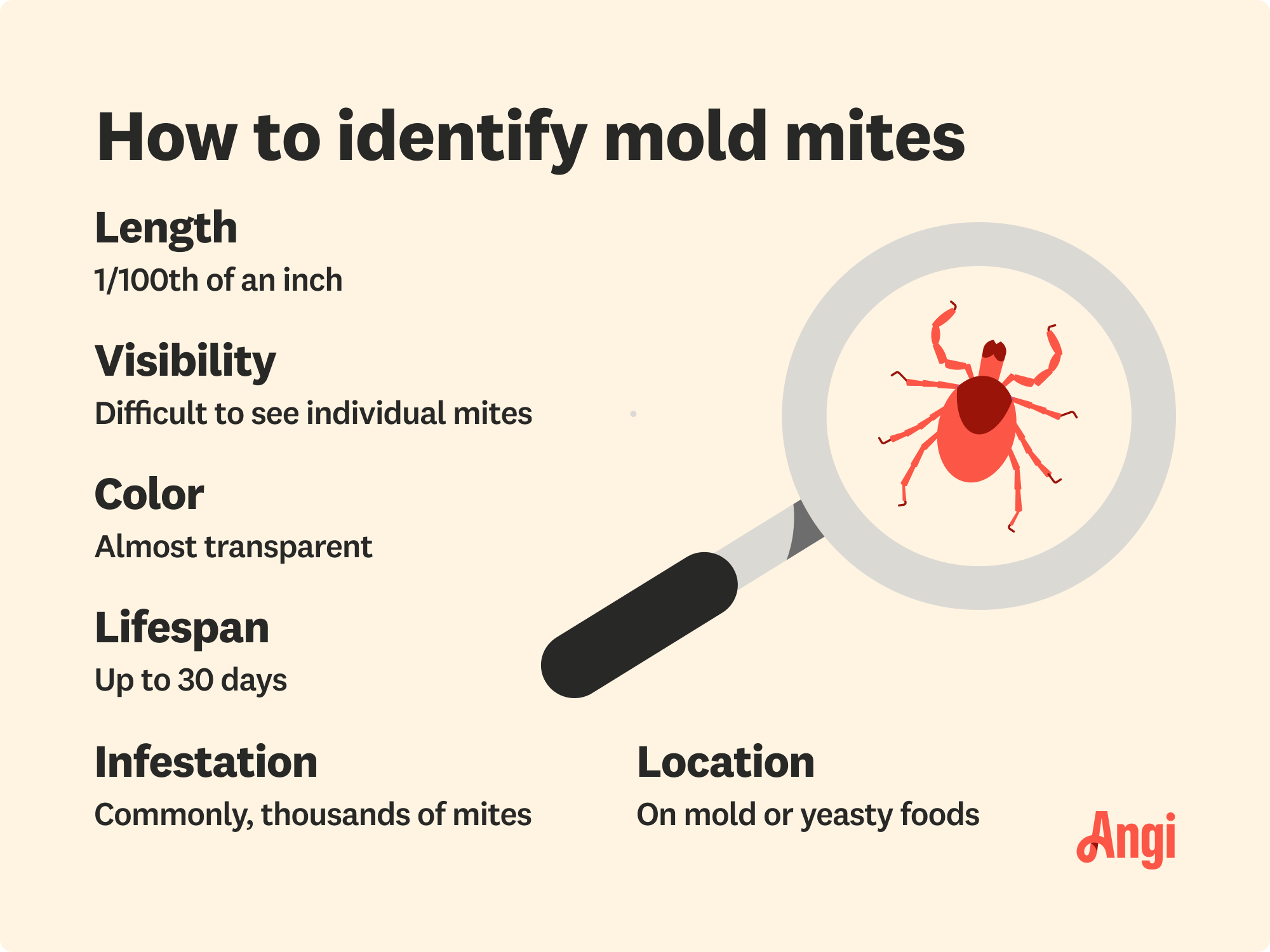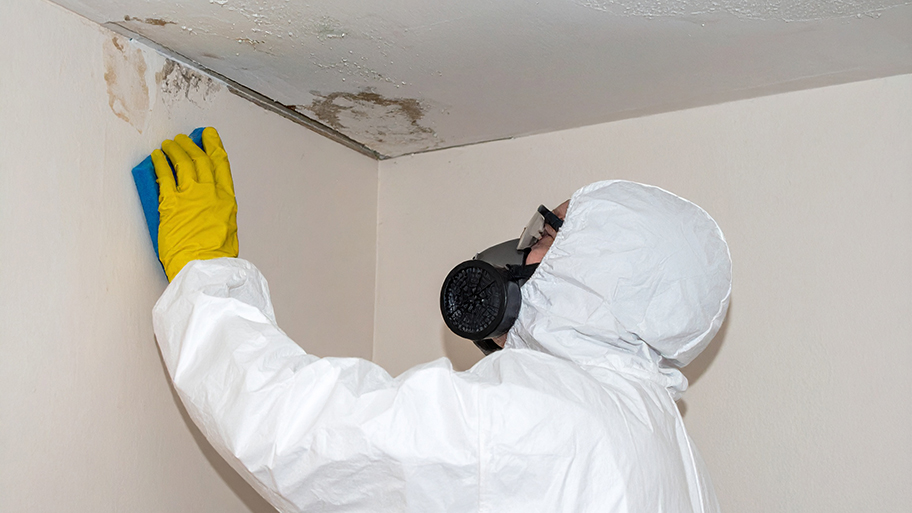
The cost of a mold inspection might seem high, but it’s one of the best investments you can make for your health and home. Read on to learn cost-saving tips.
Got mold? You've probably got mold mites


Mold mites are a type of arthropod that feast on fungi such as mold and yeast.
While you can't see a single mold mite on its own, colonies are easy to spot with the naked eye.
To get rid of and prevent mold mite infestations, you need to remove their source of food: mold.
Mold mites are small but mighty arthropods that love to feast on mold and other fungi. Like other types of mites, mold mites can trigger an allergic reaction and cause skin irritation. Knowing how to spot them, get rid of them, and prevent them will help you keep your household safe.
Mold mites are a type of arthropod related to ticks. They're found around the world and, despite their name, eat a varied diet that includes fungi, decaying wood, animal carcasses, and bacteria. The scientific name of one of the most common species of mold mite, Tyrophagus putrescentiae, actually translates to "cheese eater."

A single mold mite measures less than half a millimeter in length and is nearly transparent. They may be white or light tan in color and don't have wings. Since they are so small and practically clear, it's nearly impossible to see an individual mold mite with the naked eye.
However, when mold mites come together, they tend to be very visible. A mass of mold mites looks like a white or gray fuzz, or biomass, found in areas with mold or nearby food. If you look at the mass using a magnifying glass, you may be able to see it moving.
One surefire sign of mold mites is visible mold in an area. Another way to tell if you have the mites is to look for white, gray, or brown dust.
When conditions become less than desirable, mold mites start to move in search of greener pastures. You can often see this movement, which looks like dust or fuzz migrating across a surface.
While mold mites aren't fatal to humans, they can cause allergic reactions and irritation. Plus, the mites accompany a mold infestation, which can be dangerous in and of itself. According to the Centers for Disease Control and Prevention (CDC), mold can cause respiratory illness. Depending on where it grows, it can also cause structural damage to your home.

The best way to get rid of mold mites is to get rid of their food source: mold. The way you should get rid of mold depends on the type of surface it's on and the location. For example, you can kill mold on wood by deep cleaning it with vinegar and water. To get rid of mold in a bathroom, you may need to reduce the humidity and deep clean surfaces.
You don't need to use particularly strong cleaners, such as bleach, to get rid of mold. Vinegar, tea tree oil, and other options can kill mold naturally and eliminate mold mites.
Of course, there may be cases where you need to call in a professional to do the job. If the mold is extensive or you're concerned about your safety, consider hiring a local mold removal pro. You may want to hire a local pest exterminator to get rid of the mites and a local general contractor to evaluate any damage caused by the mold.
Just as removing their food source is the best way to get rid of mold mites, preventing mold growth is the ideal way to prevent the mites from getting into your home. Create conditions that are inhospitable for mold by:
Using a dehumidifier
Improving airflow and ventilation
Cleaning or replacing HVAC and AC filters regularly
Clean spills or moisture quickly
Keep your home clean
From average costs to expert advice, get all the answers you need to get your job done.

The cost of a mold inspection might seem high, but it’s one of the best investments you can make for your health and home. Read on to learn cost-saving tips.

Mold remediation cost can quickly escalate. But if you have mold in your home, the cost for mold remediation is worth it.

Find out how mold sneaks into crawl spaces and impacts your home and health. We unveil the most effective remedies for kicking mold to the curb.

What does black mold look like? It has a dark color and may appear slightly fuzzy. Use this guide to learn about the variations in black mold’s appearance.

A damp, flood-prone basement is the perfect habitat for mold. Here's how to get rid of mold in your basement and keep it from coming back.

Worried about mold in your central air conditioner? Learn how much it’ll cost to hire a pro vs. DIY this issue, and how to clean and disinfect your AC unit.